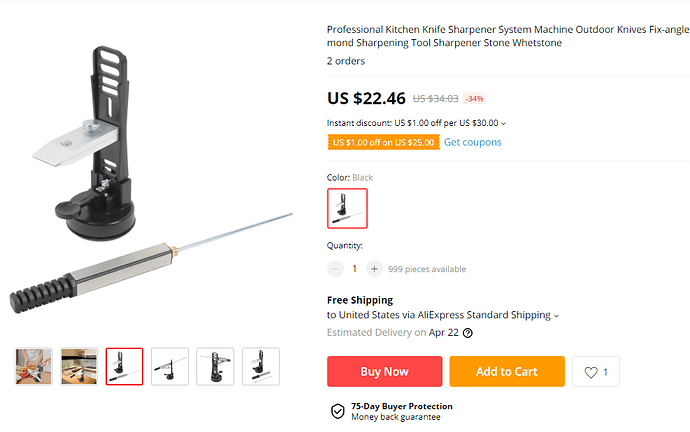Just wondering.
Why not get a good quality 1000 grit water stone (wetstone)?
TLDR. if you are new to sharpening get. Amazon.com
I would recomend a good quality stone. Will cost your roughly 50$. But will last a life time. Suehiro Cerax 1000 for example.
This video will talk about different 1000 grit stones.
I sharpend all my knifes on a naniwa combination (1000/3000) budget stone (20-30$ range) for a while. But i bought a higher quality stone now. And now i regret ever buying the budget stone.
for grafting purposes a 1000 stone and some practise should get your grafting knife razor sharp.
Better to have 1 quality 1000 grit stone. Than to have a budget 1000/3000 stone.
Higher grit stones have their use. But are useles until you’r technique is good enough. So get a 1000 grit stone. And once you can shave with your sharpend knife from the 1000 stone. You can always buy another 3000 or 5k or 8k or even 10k stone. You will probably not need it though.
Sharpening normaly. And then stropping on the 1000 stone, should get you a polished edge that can shave. Especialy if you strop without or with low pressure on the stone
Don’t get confused by all the different grits sizes and types of stones. A good quality 1000 grit stone. And 2 dollars worth of second hand knives (or spare kitchen knives) will get you 98% there.
You need to practise a bit. But the stones wear verry slowly. And a second hand knife from a thrift store is almost free. Practise on a expendable knife first. Don’t make your grafting knife your knife scharpening practise knife!
It is mostly technique. With the right technique you can even slice tomato’s paper thin when scharpend on 140 grit!!
You can even sharpen on a brick. Although i would not recomend it.
Most grafting knifes are flat on 1 side. And are sharpend at an angle on the other side.
comparable to a Yanagiba
Nice showcase of technique and “stropping” on your scharpening stone
And ofc a skillcult video <3
If you have a quality wetstone. Id use 1 side for “normal” sharpening. And keep the bottom flat. And only use the bottom for the flat side of your grafting knife. This saves you having to flatten your stones often, or at all.











